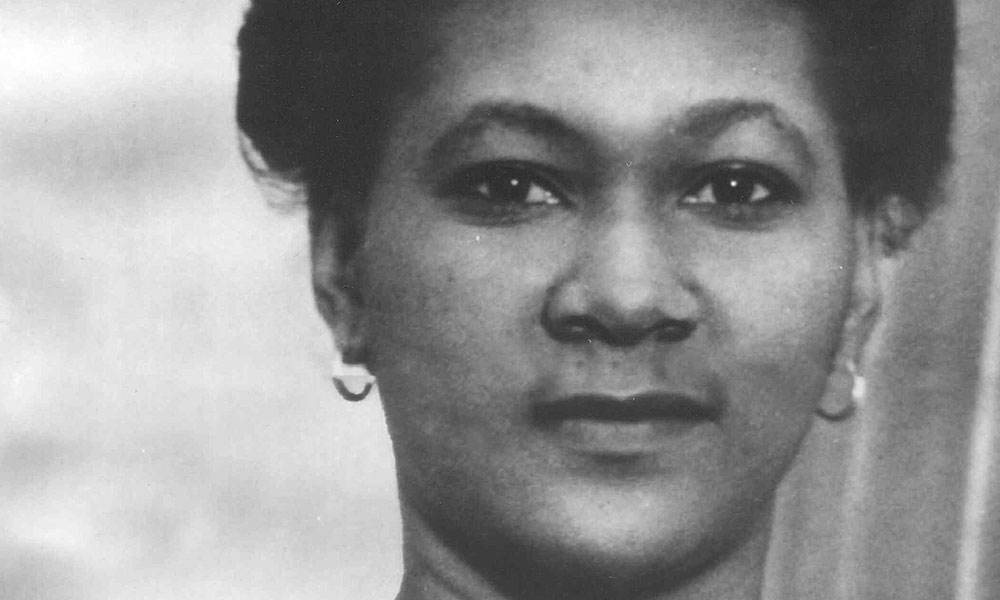Isa A. E. Bradley

Isa A. E. Bradley the daughter of Thomas Bradley and his wife, Blanche Wattley was born in New Town on the 19th May 1877. The family lived in Salt Pond Alley, then also known as Sugar Loaf Alley, in a house that has belonged to John Thomas Bradley a stevedore. Unmarried and with no children of her own, Bradley was devoted to the teaching profession.
Her career started at as a pupil teacher at the Moravian School in the district of Cayon. After a course at Spring Gardens, Antigua, she returned to her school and was appointed headmistress. On April 1st, 1915, Government took responsibility for the running of all denominational primary schools except St. Joseph’s Roman Catholic School. Bradley was appointed Headmistress of the Basseterre Girls’ School. Her salary was fixed at £50 per annum but she also received a result grant of £36.11s 7d per annum, an allowance of £6 per annum for quarters and a bonus of 15%.
In this capacity she was responsible for the early education of many girls in the Basseterre area. Once these young ladies reached the Seventh Standard, the final class in Elementary School, she would choose the most promising of them to instruct as pupil teachers. Her training went beyond the class room and she was known to encourage good deportment and discretion in the choice of friends. Among the girls she tutored were three daughters of J. Matthew Sebastian, Ismay Burt, and Gwen Whattey all of whom followed in her footsteps and became highly admired teachers in their own right. A strong disciplinarian, she was respected by students and teachers alike. Bradley retired in 1935. Her career was celebrated with songs and recitations at the Basseterre Girls School.to which past students were invited and some paid tribute to their former teacher. She then bought an automobile which she placed in the hands of a certain Mr. Warner and departed for an extended vacation in the United States where she visited friends and family. However Bradley did not quit teaching. Instead she kept a small private school at her residence at Stainforth Street.
Bradley was a member of the Mutual Improvement Society and joined the Universal Benevolent Society in its early days. Because of her employment she had to keep a low profile and could not come out in total support as Sebastian was able to do. However Bradley was an outspoken person and could not keep quiet for long. She soon became a member of the Board of Directors of the Workers’ League and during the 1937 campaign she was very visible on the League’s platform. The Colonial Government was facing challenges throughout the Caribbean. In a speech she made in Old Road during the 1937 campaign she was reported to have told her listeners how a certain German minister had referred disparagingly to her pupils. It was one of several illustration she gave to show that “no white man should be elected to the Council”. Edgar Challenger, Vice President of the League quickly disassociated himself from her statement stating that it was not the League’s policy to encourage such ideas. However the slogan caught on and labourers in various localities were heard repeating it.
Later that year Marcus Garvey visited St. Kitts and was welcomed on arrival by J. Matthew Sebastian who was accompanied by “an ex-woman school teacher of ‘constitutional prominence’”. Since no other retired female school teacher is mentioned as having been actively involved in the political activities of the time, it is reasonable to conclude that this person was Bradley. Whilst the Administrator, surmised Sebastian’s role in welcoming Garvey was “a service ... in the public interest,” he made no similar conjecture regarding Bradley. Her earlier comments and her presence in the welcoming party indicate strong, publically manifested affinities with Garvey’s ideology. At a time when women were expected to take a back seat in politics, she seemed to be quite eager to take on a highly visible role and to align herself with , what was then a controversial movement of black consciousness..
Isa Bradley was also a founding member and vice-president of the Teachers’ Association, the formation of which was seen as ‘a pity’ by Administrator Burdon. His real concern with regards to its existence was that its officers were friendly with the managers of the Universal Benevolent Association in particular with J..M. Sebastian.
Bradley was part of a Kittitian coloured elite which was made up of merchants, planters, teachers, druggists and other professionals with a secure income, a sound educational background and a deep sense of achievement. For them the restrictions imposed by the Colonial Administration was a stumbling block in their quest for personal fulfilment and economic advancement.
Isa Bradley died on the 25th September 1947. She had been a teacher for fifty-eight years.
Ras Tambora Kitwana
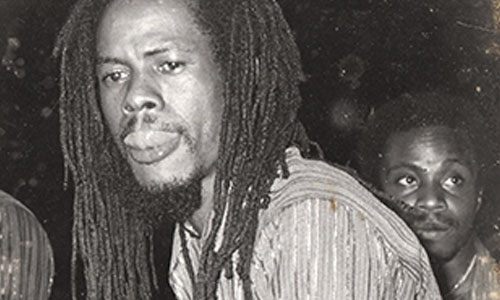
Ras Tambora Kitwana was born on the 7th Jan 1949 and given the name Fitzroy Christian Matthew. He grew up in Irish Town. His interest in music started early in life and at the age of 14 he started performing with the Joseph Liburd Orchestra. Known variously as Fitzy, Chili, Jerry Mopstick and finally as Tamora, he moved through the Kittitian musical arena with the ease of one born to be a musician. He played with the Silver Rhythm Combo, Grand Ash 2, Ellie Matt and the G Is Brass and the G Is Brass International travelling widely in the Caribbean, Europe and North America.
Tambora joined the Rastafarian movement at a time when doing so often incurred the wrath of the authorities.
He read widely and collected information in books and from newspapers. It was an interest that stood him in good stead when he was given the opportunity to run a regular morning program on ZIZ called Under Banyan Tree. His short presentations highlighted local cultural traits and personalities in ways that were meaningful and easily remembered. He became a reference point for students and teachers alike.
His performances earned him numerous fans and his cultural contributions brought him acclaim and awards culminating in the Medal of Honour in 2009
Tambora Kitwana died on the 23rd Jan 2013.
Cromwell Ira Bowry
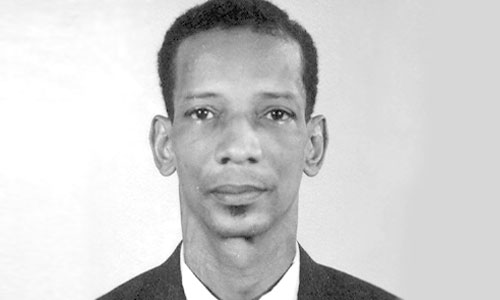
Cromwell Ira Bowry was born in Dieppe Bay on the 24th November 1925. He was the last of nine children born to Jedidiah Bowry and his wife Catherine nee Gumbs. His friend Lloyd Francis, whom Bowry saw as a champion cyclist taught him how to ride a bicycle and made him “venture into the ‘deep’ of Dieppe Bay’s waters and learn to swim.
Mrs Bowry had been the Headmistress of the Dieppe Bay Methodist Wesleyan school in the days when the churches were responsible for primary education and she committed herself to starting her children’s education at home. Young Cromwell then continued his education at the Dieppe Bay Infants School and on the 1st September 1932 he was transferred to the Bethel Government School. He completed Standard Seven and in 1941 became a pupil teacher, a position he held for two years.
It was probably his friendship with Lloyd Francis that encouraged Young Cromwell’s real ambition to become a Mechanical Tradesman. Francis had ben the mechanic who took care of the car of the Dieppe Bay Methodist Church until he left for Curacao in 1938. In 1943 Bowry left the teaching profession to become an apprentice in the machine shop of the Sugar Factory. He trained under Henry George Audain and made a lasting impression on the other men with whom he worked. The training that Bowry received in the machine shop instilled in him a love for precision and form, and an appreciation for neatness and detail. He continued to work at the Factory of the next seventeen years.
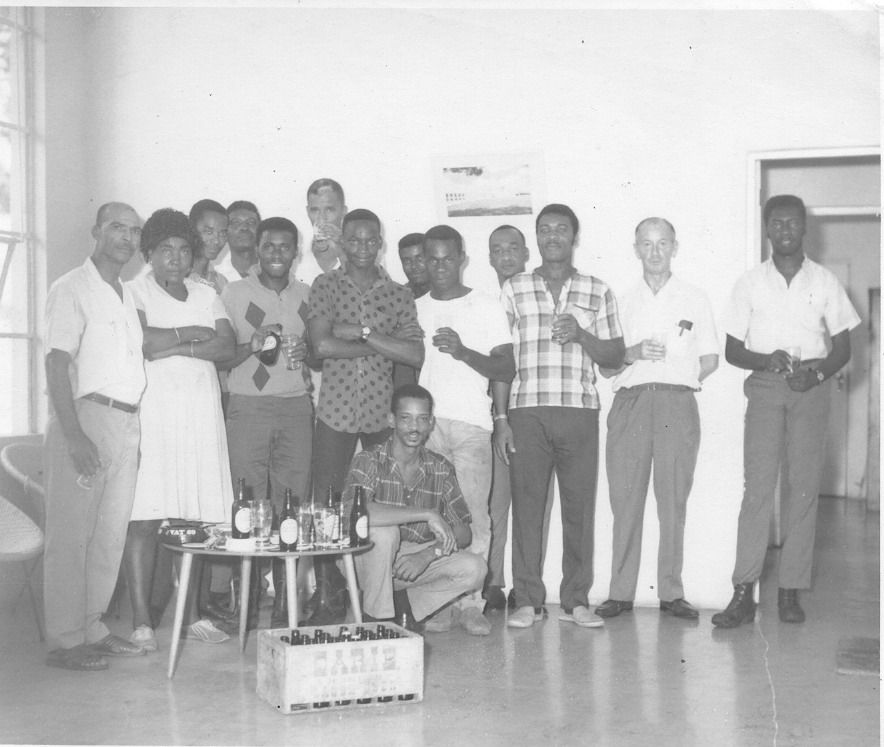
In 1960, Cromwell Bowry was seconded as Mechanical Engineer to the St. Kitts Breweries where he continued to work till 1989
Meanwhile Bowry started to broaden his interests. Photography gave him a means of expressing his artistic inclinations and quickly became a business. He took pictures of everything in sight including himself and eventually set up The Central Photo Studio in Basseterre. His biggest success came when the management of the Sugar Factory decided to demolish the two steel-clad smoke stacks. Dynamite was set at the brick bases and the operation went smoothly. Cromwell was there with his camera and he caught the first chimney as it fell. The following day he had photographs of the event for sale at a dollar per print and they sold quickly.
Another interest was triggered by D. L. Matheson. On one of his trips in the wider Caribbean, Matheson acquired a steel pan which he brought back to St. Kitts. Cromwell Bowry was one of the first men to learn to play it. His love for the “metallic sound that reverberates to a stage that is comparable to a piano” sharpened his interest and he went on to teach himself how to tune it and how to build other pans and eventually to teach others how to play it. Bowry became an avid enthusiast and supporter of steel band and he rejoiced that,
“the entire Caribbean has now accepted and declared an awareness of steel band or the steel pan music and the acceptance of the musical instrument for what it really is!!! A musical instrument!!! A creation of the Caribbean people.”
His love for the performing arts took various shapes and in 1957, in St. Kitts first Carnival, Bowry organised a troupe called Sing Sing Convicts which won a prize. He continued to present troupes in many Carnivals that followed. He also appeared in a number of plays. During the Arts Festival of 1964 Bowry played Malvolio opposite C. A. Paul Southwell’s Duke in Twelfth Night. In 1977 Bowry brought his own production of You the Jury before the Kittitian public. It was followed by Witness for the Prosecution in 1978. Premier Southwell died in 1979. It was a tremendous loss to Bowry and others who had shared the stage with him and no productions took place during that year. But true to the theatrical adage that “the show must go on” Bowry returned with a musical evening in June 1980.
On stage or with friends, Bowry loved to recounts stories but mostly he enjoyed telling jokes. He also wrote, produced and acted in numerous theatrical performances portraying “from the sublime to the ridiculous”. In 1967 Statehood was declared for St. Kitts Nevis and Anguilla. Bowry was the Master of Ceremonies at a function in Anguilla. The political situation between St. Kitts and Anguilla had reached a critical point and some of the spectators tried to disrupt the evening’s proceedings. In the midst of the confusion Bowry held his ground and his voice could be heard above the noise insisting that the show must go on.
He often used his talent to assist in church fund-raising events but is involvement with the Wesley Methodist Church went beyond that. He was involved with the Men’s Fellowship and was the only male member of the Women’s League. In his younger days he had even harboured the desire of becoming a local preacher in the Methodist Church. He also felt welcome at the Moravian Church which his wife Mary Jane DeLacoudray attended. Together they had three sons and three daughters.
Cromwell Bowry exited the stage of life on the 23rd June 1993.
John H. A. Duport

John H. A. Duport was born in the Parish of St. Thomas, Middle Island in either 1830 or 1831 and may have been the son of enslaved parents. Nothing is known of his childhood but he must have been a good student and seems to have developed an interest in the Anglican Church during his teenage years.
In 1851, Archdeacon Brathwaite of St. George’s recommended two young men for training for a new Mission in Africa which was being launched from Barbados by the newly formed West Indian Church Association, a branch of the Anglican Church, whose objective it was to promote a mission from the Church in the West Indies to West Africa. It functioned in conjunction with the Society for the Propagation of the Gospel in London
The two men were Moses Morris and John Duport. In November they were admitted to the Mission House at Codrington College to begin their preparation with courses in the Bible, History, Geography, Grammar, Arithmetic and Music. Duport spent four years at Codrington and while Principal Rawle was in England during 1854, he acted as master of the “Society School” a school on the Codrington estates administered by the SPG.
In 1855 Duport accompanied the Rev. Leacock to Africa. They travelled to England and after a brief stay sailed for Sierra Leone reaching their destination, Rio Pongas on the 12th December 1855. The coastal areas of the territory were occupied by the Susus, followers of native religion with the Muslim Fulani in the interior. The two groups were often at war with each other. The mission was set up on land donated by Chief Richard Wilkinson, who was the son of and English man and an African woman and who had been partially educated in England. By August 1856 the senior member of the team fell victim to the climate and died. The work of the mission fell on John Duport, his ‘subordinate teacher’ and “industrial help”. Duport was ordained Deacon in Sierra Leone two months later.
The mission consisted of a church, a school and a small house all built out of mud walls, grass roofs and bare floors. The church was the venue for services and instruction every evening. Regarding the first day Duport later recounted how he found for scholars a number of naked boys wearing belts with long knives stuck in them. He explained to them that they had to leave the knives at home so the next day they showed up with muskets.
Duport also had to shoulder administrative duties which included keeping accounts and forwarding these to the SPG. As he had not been told of this responsibility, he found himself without a salary for more than a year until he received assistance from the Governor of Sierra Leone. The chain of authority was not clear. Reporting to Barbados was going to cause difficult and contact with the Bishop in Sierra Leone also took time which left Duport in isolation.
Very early Duport realised the importance of communication in the native language and embarked on a translation of the Prayer Book into Susu and the preparation of a Susu primer to enable missionaries that followed him to acquire a working knowledge of the indigenous language. By 1860 he was able to preach in Susu. Duport was also concerned with how to deal with native customs. Polygamy was common in the region but frowned upon by the Church. Gift giving was a tradition which often made the difference between a welcome and a rejection of the visitor. When confronted by a chief about the fact that he had not presented any gifts, Duport showed an insensitivity typical of the men who sponsored the mission and answered that the Gospel was enough.
The young missionary also had the unfortunate experience of having charges brought against him. Very likely triggered by jealousy at the fact that a black man was in charge of the mission, Chief Wilkinson and School Master Cyprian claimed that he had misappropriated funds, taken a ring belonging to Rev Leacock, had illicit intercourse with a young woman, was drunk during service, and engaged in trading while neglecting the school. The Board in Barbados found that there was no foundation to the charges and that the trading that Duport had actually done had been for the good of the mission. However they were still cautious and recommended “probationary employment”
When Duport returned to work it was under the Rev. W. L. Neville in 1858. Three new missionaries arrived soon after but illness took its toll on the newcomers and once again the burden of the mission fell almost completely on the Kittitian deacon. He was finally ordained priest on the 26 th February 1861. That same year the old mission house was destroyed by fire and with it went Duport’s Susu manuscripts. Undaunted he started his work of translation again and eventually a working knowledge of the language became a requirement for ordination of missionaries in that region. He also laid the foundation of a new station in a neighbouring territory and also began to raise the issue of training native missionaries. Then in 1863, an illness forced him and the new head of the mission into convalescence. They were both sent to Barbados to recover.
Duport’s return to the Caribbean was not a rest period and the services he held, raised even more funds for the work he was doing in Africa. He visited several islands where the fact that he was a descendant of African slaves aroused a great deal of curiosity so that each time he appeared in public he addressed packed audiences. Newspaper commentaries on his services held him up as
the positive and most conclusive refutation, ... of the fictitious theory which denies the sable African intellectual equality with the rest of mankind.
For the Anglican Church, Duport’s Caribbean visit was a magnificent opportunity for a public relations exercise. In St. Kitts, the Moravians of Basseterre offered to welcome him into their church where he could address a wider audience.
On the 18th September 1863, the Board appointed Duport Superintendent of the Pongas Mission, however his stipend was less than that of his white predecessors and even his appeals for an increase were dismissed as unnecessary. The request for an allowance to cover medical expenses was also rejected. In 1865 he became ill again and lost a child. His wife died in 1867. He made her coffin himself as there was no available carpenter at the time and then held her funeral service in English, at the Church and in Susu at the grave site. He then had to face the task of looking afte three children on his own. Despite all this Duport continued to work bearing the physical strain of caring for the two main stations and for several smaller ones that were being built.
One of his main concerns stemmed from the very infrequent visits of the Bishop of Sierra Leone. This meant that converts had to continue receiving instruction without any idea of when they would be confirmed by the Bishop. However Duport made an effort to maintain a presence in all the stations and appointed suitable lay persons as church and class visitors to ensure constant attention to the various branches of the mission. He also appealed to the local Chiefs to identify young men that he could train as teachers and catechists
In 1869, Duport’s professional status suffered a blow when it was discovered that he had been living with his fiancée before they had been officially married. His licence to serve in Rio Pongas was revoked. Meanwhile, a chief who owed a debt to the mission that he was unwilling to pay accused the missionary of manslaughter. An investigation cleared him of the latter charge.
At the invitation of the King of Naloos, Duport went to Rio Nunez where he again zealously launched himself into all manner of missionary activities. By then his Prayer Book in Susu had been published, spurring him on to continue his translations of the Bible. Another fire destroyed much of his work and this time depression set in. He wrote, “I feel now completely discouraged and my heart is sad within me.” He rebuilt the church but his health continued to deteriorate. Meanwhile Barbados passed responsibility for him to the English Committee. In 1872, his licence was restored but his health forced him to request a leave of absence. Despite his reconciliation and his deeply penitent state, the English Committee preferred that he not visit England and he proceeded instead straight to the West Indies. However a direct passage was impossible and Duport landed in England in June 1873 where he died on the 20th September. His family he entrusted to the charity of the West Indian Church Association.
Aimee Gertrude Dinzey
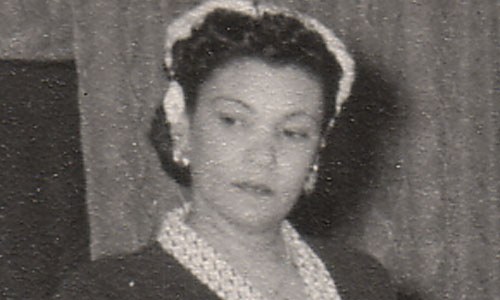
Aimée Gertrude Dinzey was born on 7th January 1902 in Gustavia, St. Barthelemey, French West Indies. Her parents, Charles and Florence Dinzey had three children, she being the eldest and their only daughter. In 1910, Charles, who was a shoemaker by trade, along with his family came to St. Kitts to work.
In 1919, at the age of 17, like so many others of the time, the tall and beautiful Aimée set sail on the Korona for to New York where she worked as a nanny. She left for St. Kitts three years later when she realised that her mother had no female relatives left on the island. Her second stay in New York started in 1939 and this time she was trained as a hairdresser. On her return to St. Kitts, she became the first professional hairdresser on the island and the proprietor of the Milady Beauty Salon, on the corner of Fort and Central Street. The motto of her establishment was loveliness made lovelier. Her business premises, from time to time, was a ticket outlet for theatrical events.
New York brought out the creative spirit in Dinzey. It was there that she met and became friends with musicians Eubie Blake, Fats Waller and Andre Razaf, a prolific composer. Her friendship with Razaf must have made quite an impression on him because he later dedicated his song Memories of You to her.
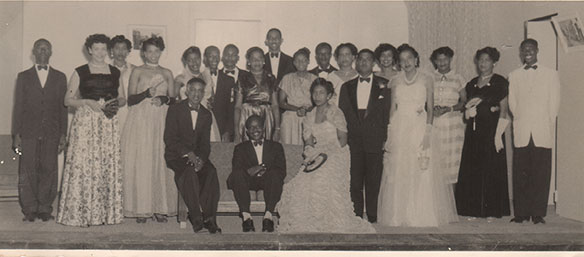
This creativity continued to find expression in her activities in St. Kitts where she became one of the founding members, and president of the Basseterre Players, a theatrical group engaged in producing plays for public entertainment. She acted in presentations of Shakespearian plays and performed leading roles in the lighthearted presentations of Lady Windemer’s Fan (1954) and the Matchmaker, the last being the stage production of Hello Dolly . In June 1960, Noel Vaz, Staff Tutor in Drama at the University College of the West Indies, visited St. Kitts on the occasion of the staging of the Leeward Island Drama Festival and was an inspiration to Dinzey. She also became a member of the St. George’s Anglican Church Choir.
In a small publication which appeared in 1960, John Brown, resident tutor at the University College of the West Indies chose to include two of Dinzey’s short stories. Then in 1966 she formed part of the Statehood Celebrations Committee which was preparing for the advent of self-government in the State of St. Kitts-Nevis-Anguilla.
Dinzey also found time to teach herself painting. She practiced by copying other paintings and pictures to which she made minor alterations. Her water colours of orchids and other flowers captured their delicate beauty. She also enjoyed painting local scenes such as Brimstone Hill and fishermen making nets on the shore. The globe which was displayed at the University Centre, and which was recently destroyed by hurricane, was her creation. Dinzey taught Art at the High School for a year and had several private students.
Aimée Dinzey died on 26th February 1976 and was survived by her only daughter, Carmen Dinzey Brookes and her family.
National Archives
Government Headquarters
Church Street
Basseterre
St. Kitts, West Indies
Tel: 869-467-1422 | 869-467-1208
Email: NationalArchives@gov.kn
Website: www.nationalarchives.gov.kn
Follow Us on Instagram

